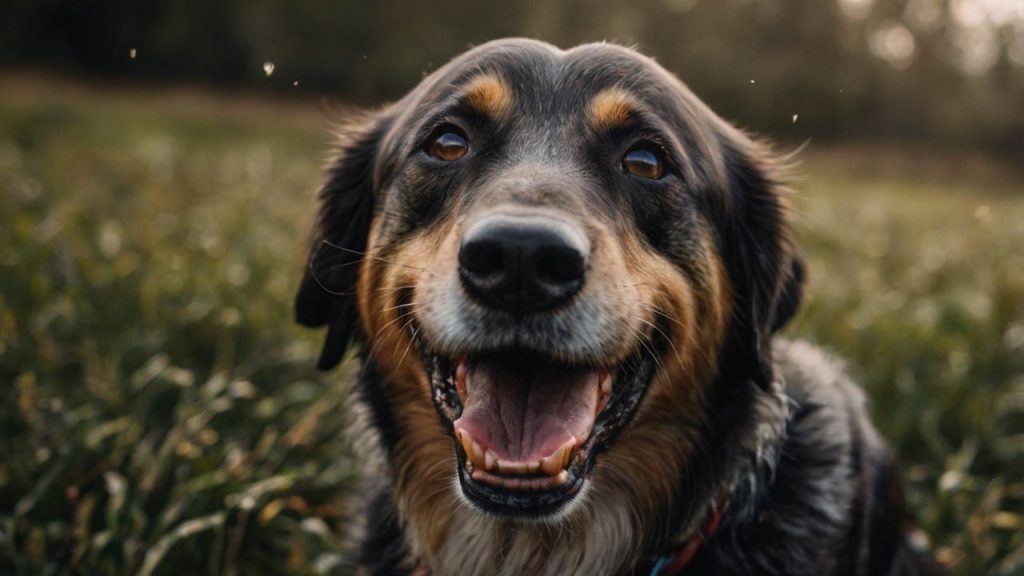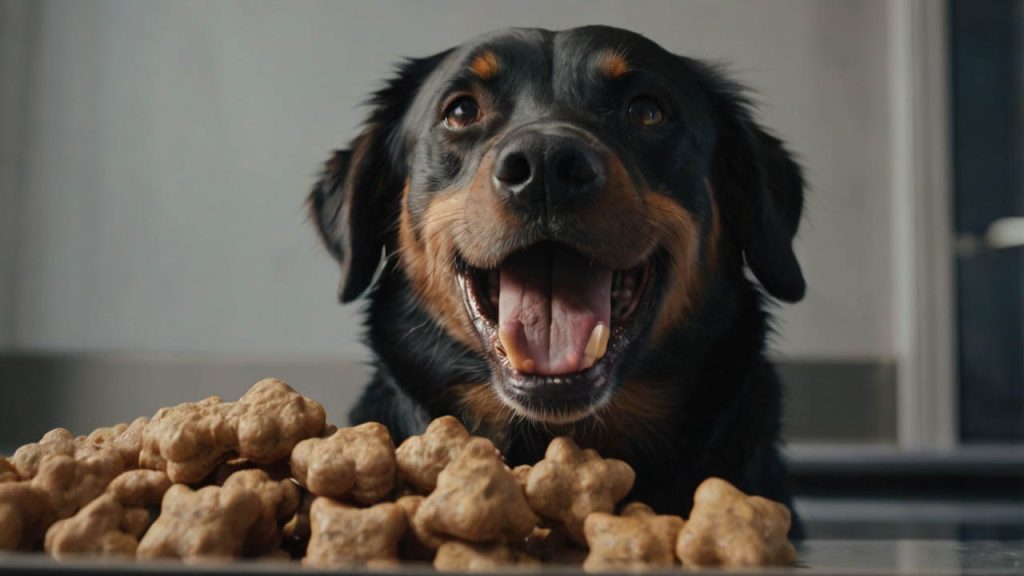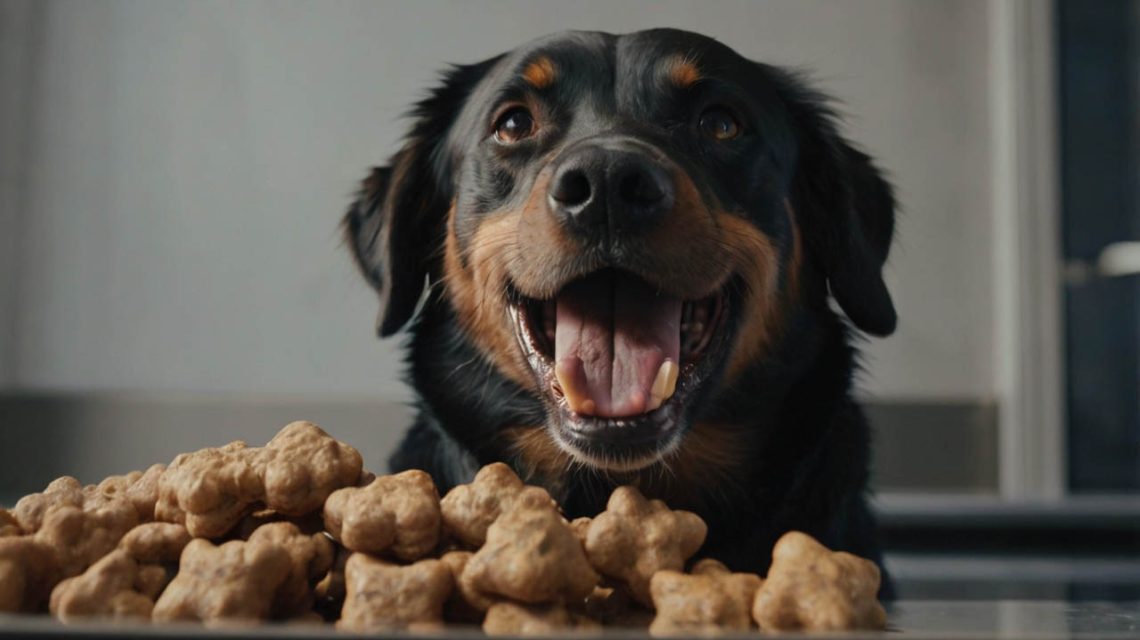Introduction: Solving Your Dog’s Bad Breath Problem
Finding the best dog breath treats can transform those unpleasant doggy kisses into enjoyable bonding moments while addressing underlying oral health issues that affect 80% of dogs over age three. According to the American Veterinary Dental College, periodontal disease remains the most common clinical condition in adult dogs, with bad breath serving as an early warning sign that owners shouldn’t ignore. Moreover, research from veterinary dental specialists indicates that effective breath-freshening treats can reduce plaque buildup by up to 70% when used as part of a comprehensive oral care routine.
The search for the best dog breath treats goes beyond simply masking odors—it involves understanding the root causes of halitosis and selecting products that actively promote dental health. Studies published in the Journal of Veterinary Dentistry demonstrate that certain treats containing specific enzymes, probiotics, and natural ingredients can neutralize odor-causing bacteria while mechanically removing plaque through chewing action. Furthermore, the right breath treats can prevent costly dental procedures, with professional cleanings averaging $300-800 and extractions potentially exceeding $2,000.
Choosing effective breath-freshening treats requires evaluating ingredients, understanding your dog’s specific needs, and recognizing quality indicators that separate genuinely beneficial products from those offering temporary masking effects. While the pet treat market offers hundreds of options claiming to freshen breath, only products with proven ingredients and appropriate textures deliver lasting results. Therefore, this comprehensive guide examines scientifically-backed breath treats, their active ingredients, proper usage, and selection criteria to help you make informed decisions for your dog’s oral health.
Why Best Dog Breath Treats Matter for Oral Health
Understanding the Causes of Bad Breath
Before selecting the best dog breath treats, understanding halitosis causes helps target the right solution. Bacterial overgrowth in the mouth produces volatile sulfur compounds responsible for most bad breath cases. Subsequently, these bacteria thrive on food particles trapped between teeth and along the gum line, creating plaque that hardens into tartar within 24-72 hours.
Periodontal disease affects 85% of dogs over age four, making it the primary cause of chronic bad breath. The condition progresses through stages, beginning with gingivitis characterized by red, swollen gums and mild odor. Without intervention, bacteria destroy supporting structures, leading to tooth loss, systemic infections, and severe halitosis that breath treats alone cannot resolve.
Diet significantly influences breath quality beyond dental disease. Dogs consuming high-protein diets may experience temporary “meaty” breath, while those eating fish-based foods often have characteristic odors. Furthermore, gastrointestinal issues, kidney disease, or diabetes can cause distinctive breath odors requiring veterinary attention rather than just breath treats.

The Science Behind Effective Breath Treats
The best dog breath treats work through multiple mechanisms to combat halitosis effectively. Mechanical action from chewing provides primary benefits by physically scraping plaque from tooth surfaces. Research shows that treats requiring at least 30 seconds of chewing time per piece demonstrate significantly better plaque reduction than quickly consumed options.
Active ingredients distinguish truly effective products from basic treats with added mint flavoring. Chlorophyll neutralizes odors naturally while providing antioxidant benefits. Enzymes like glucose oxidase and lactoperoxidase break down bacterial biofilms and inhibit new growth. Moreover, probiotics introduce beneficial bacteria that compete with odor-causing organisms for resources.
Texture and composition determine treat effectiveness for mechanical cleaning. The Veterinary Oral Health Council (VOHC) awards its seal to products demonstrating measurable plaque or tartar reduction in controlled studies. Subsequently, treats with ridges, nubs, or fibrous textures that flex around teeth during chewing provide superior cleaning action compared to smooth, hard biscuits.
Best Dog Breath Treats: Top Product Categories
Enzymatic Dental Chews
Enzymatic formulations represent the gold standard among the best dog breath treats for comprehensive oral care. These products combine mechanical cleaning with biological action against bacteria. Leading brands incorporate patented enzyme systems that continue working after the treat is consumed, providing extended breath-freshening effects.
Virbac C.E.T. VeggieDent chews exemplify effective enzymatic treats, featuring a unique Z-shape that reaches all tooth surfaces. Clinical studies demonstrate 60% plaque reduction with daily use. Furthermore, their plant-based formula suits dogs with protein sensitivities while delivering chlorophyll for natural breath freshening.
Purina DentaLife treats utilize a porous texture with ridges that clean hard-to-reach back teeth where plaque accumulates most. Their proprietary blend includes calcium and active ingredients that neutralize bacteria. Additionally, size-specific formulations ensure appropriate chewing time for maximum benefit across all dog breeds.
Natural and Organic Options
Natural ingredients appeal to owners seeking the best dog breath treats without artificial additives. These products rely on plant-based compounds, essential oils, and whole food ingredients to combat bad breath naturally. Subsequently, they often provide additional health benefits beyond oral care.
Greenies Original Dental Treats pioneered the natural dental treat category with their highly digestible formula. Containing natural chlorophyll, these treats freshen breath while their unique texture cleans down to the gum line. Research shows daily Greenies use reduces tartar buildup by up to 68% and plaque by 57%.
Whimzees dental chews use limited ingredients including potato starch and natural colors from vegetables. Their distinctive shapes encourage prolonged chewing while grooves and ridges maximize cleaning action. Moreover, these vegetarian treats suit dogs with meat allergies while effectively freshening breath through mechanical action and natural compounds.
Best Dog Breath Treats: Key Ingredients Analysis
Active Breath-Fighting Components
Understanding ingredients helps identify the best dog breath treats for specific needs. Chlorophyll, nature’s deodorant, neutralizes odors at the molecular level while providing antioxidant benefits. Products containing sodium copper chlorophyllin show superior stability and effectiveness compared to regular chlorophyll.
Parsley, mint, and fennel provide natural breath-freshening through essential oils that combat bacteria. These herbs additionally support digestion, addressing potential gastrointestinal causes of bad breath. However, concentration matters—treats should contain therapeutic amounts rather than trace flavoring.
Probiotics represent an emerging category in breath treat formulation. Beneficial bacteria like Lactobacillus acidophilus compete with pathogenic organisms, reducing volatile compound production. Studies indicate that probiotic-enhanced treats provide longer-lasting breath improvement compared to traditional formulations.
Ingredients to Avoid
Identifying problematic ingredients ensures you select truly beneficial best dog breath treats. Excessive sugar feeds bacteria, potentially worsening breath despite temporary masking effects. Similarly, artificial sweeteners like xylitol prove toxic to dogs, requiring careful label reading.
Low-quality proteins and by-products may contribute to digestive issues that manifest as bad breath. Treats using named meat sources and limited ingredients typically cause fewer problems. Furthermore, artificial colors and preservatives offer no breath benefits while potentially causing allergic reactions.
Hard treats that don’t soften with chewing pose tooth fracture risks, particularly for aggressive chewers. The ideal texture flexes slightly under pressure while maintaining structure for cleaning action. Additionally, treats should be size-appropriate to prevent choking while ensuring adequate chewing time.
Best Dog Breath Treats for Different Dog Sizes
Small Breed Formulations
Small dogs require specially designed best dog breath treats addressing their unique anatomical needs. Toy breeds often have crowded teeth creating more plaque-trapping spaces. Subsequently, smaller treats that encourage thorough chewing without overwhelming tiny mouths prove most effective.
Milk-Bone Brushing Chews Mini provide appropriately sized cleaning action for dogs under 25 pounds. Their twisted design reaches between crowded teeth while the texture removes plaque buildup. Furthermore, added vitamins and minerals support overall oral health beyond breath freshening.
Pedigree Dentastix Small/Medium combines an X-shape design with active ingredients including zinc sulphate and sodium tripolyphosphate. Clinical trials show significant breath improvement within two weeks of daily use. Moreover, their chewy texture prevents tooth damage while providing effective cleaning.
Large Breed Solutions
Large dogs need robust best dog breath treats that withstand powerful jaws while providing extended chewing time. Bigger treats should maintain structural integrity without becoming choking hazards. Additionally, large breeds benefit from treats addressing higher plaque accumulation due to larger tooth surface areas.
Nylabone Advanced Oral Care dental chews feature raised bristles that clean teeth during chewing. Their durable construction suits power chewers while freshening breath through mechanical action. Research indicates these treats reduce plaque and tartar more effectively than rope toys or raw hides.
Blue Buffalo Dental Bones for large dogs combine wholesome ingredients with effective cleaning action. Their unique shape and texture work around molars where plaque accumulates heavily. Furthermore, added vitamins C and E support gum health while parsley provides natural breath freshening.
How to Choose the Best Dog Breath Treats
Evaluating Product Claims
Selecting the best dog breath treats requires critical evaluation of marketing claims versus proven benefits. Look for VOHC seal indicating third-party verification of plaque or tartar reduction claims. Subsequently, products with clinical studies provide more reliable effectiveness indicators than anecdotal testimonials.
Ingredient transparency matters when assessing treat quality. Reputable manufacturers list all ingredients with specific sources rather than vague terms like “meat by-products.” Furthermore, active ingredient concentrations should be clearly stated for breath-fighting components.
Price per serving rather than package cost provides accurate value comparisons. Calculate daily expense based on recommended serving sizes for your dog’s weight. Moreover, consider that preventing dental disease through quality treats costs far less than professional cleanings or extractions.
Matching Treats to Your Dog’s Needs
Individual factors determine which best dog breath treats suit specific dogs. Age influences selection—senior dogs need softer textures while puppies require size-appropriate options. Subsequently, dogs with existing dental issues may need veterinary guidance on appropriate treat hardness.
Dietary restrictions narrow suitable options for dogs with allergies or sensitivities. Grain-free, limited ingredient, or novel protein treats accommodate various dietary needs. Additionally, caloric content matters for overweight dogs requiring weight management alongside oral care.
Chewing habits affect treat selection and safety. Aggressive chewers need durable options that won’t break into dangerous pieces. Conversely, gentle chewers benefit from softer treats ensuring adequate cleaning action. Furthermore, supervised initial use helps assess appropriateness for individual dogs.

Best Dog Breath Treats: Usage Guidelines
Proper Administration Techniques
Maximizing benefits from the best dog breath treats requires correct usage protocols. Daily administration provides consistent plaque control and breath freshening. Research shows that skipping even two days allows significant plaque accumulation, reducing overall effectiveness.
Timing matters for optimal results. Offering treats after meals helps remove food particles before bacterial growth accelerates. Subsequently, bedtime treats prevent overnight plaque formation when saliva production decreases. However, avoid immediately after tooth brushing, which removes beneficial toothpaste ingredients.
Portion control prevents overconsumption while maintaining effectiveness. Follow manufacturer guidelines based on dog weight, adjusting for treats’ caloric contribution to daily intake. Moreover, multiple smaller treats throughout the day may provide better breath control than single large servings.
Monitoring Effectiveness
Assessing whether chosen best dog breath treats work requires systematic observation. Breath odor should noticeably improve within 1-2 weeks of consistent use. Subsequently, examining teeth and gums monthly reveals plaque reduction and gum health improvements.
Professional dental examinations provide objective effectiveness measures. Veterinarians can compare dental scores before and after treat implementation. Furthermore, they identify any progressing issues requiring additional intervention beyond treats alone.
Adjusting treat selection based on results optimizes oral health outcomes. If breath doesn’t improve despite compliant use, underlying health issues may require investigation. Additionally, rotating between different treat types prevents monotony while targeting various aspects of oral health.
Combining Treats with Comprehensive Oral Care
Integrating Breath Treats into Dental Routines
The best dog breath treats work optimally within comprehensive oral care programs. Daily tooth brushing remains the gold standard for plaque control, with treats providing supplementary benefits. Subsequently, this combination approach reduces professional cleaning frequency and associated costs.
Water additives complement treat effectiveness by providing continuous antibacterial action. These products work between treat administration to maintain oral health. Furthermore, dental diets designed to clean teeth during regular meals enhance overall plaque control strategies.
Professional cleanings remain necessary despite using quality breath treats. Annual or biannual cleanings remove tartar that treats cannot eliminate. Moreover, veterinary examinations identify problems early when treatment is most effective and least expensive.
Natural Breath-Freshening Alternatives
Beyond commercial best dog breath treats, natural options provide additional breath support. Raw carrots offer mechanical cleaning through crunching while providing minimal calories. Subsequently, apple slices (without seeds) contain malic acid that helps clean teeth naturally.
Coconut oil contains antimicrobial properties that combat oral bacteria. Adding small amounts to food or using for tooth brushing provides breath benefits. Research indicates medium-chain fatty acids in coconut oil reduce bacterial colonization significantly.
Fresh herbs like parsley and mint can be finely chopped and added to meals. These provide chlorophyll and essential oils for natural breath freshening. However, amounts should be moderate to prevent digestive upset while providing benefits.
Common Mistakes When Using Breath Treats
Over-Reliance on Treats Alone
Expecting the best dog breath treats to solve severe dental disease represents a common misconception. Advanced periodontal disease requires professional treatment before treats can effectively maintain oral health. Subsequently, delaying veterinary care while trying various treats allows problems to worsen.
Ignoring underlying health issues causing bad breath leads to ineffective treatment. Kidney disease, diabetes, and gastrointestinal problems cause distinctive odors that treats cannot resolve. Furthermore, these conditions require medical management for both breath and overall health improvement.
Inconsistent use undermines treat effectiveness for breath control. Sporadic administration allows bacterial populations to reestablish between treatments. Moreover, owners often discontinue use after initial improvement, leading to rapid problem recurrence.
Selection and Safety Errors
Choosing inappropriate sizes among best dog breath treats creates safety hazards. Treats too small for large dogs pose choking risks, while oversized options prevent proper chewing in small breeds. Additionally, multiple treats given simultaneously may cause digestive upset or blockages.
Failing to supervise initial treat use misses potential problems. Dogs may attempt to swallow large pieces without adequate chewing. Furthermore, some dogs hide treats rather than consuming them, eliminating any breath benefits.
Ignoring expiration dates compromises treat safety and effectiveness. Rancid fats in expired treats cause digestive upset and worsen breath. Moreover, active ingredients like enzymes lose potency over time, reducing breath-fighting capabilities.
Conclusion: Achieving Fresh Breath Success
Selecting the best dog breath treats requires understanding both your dog’s specific needs and the science behind effective oral care products. Throughout this comprehensive guide, you’ve discovered how quality breath treats work through mechanical cleaning and active ingredients to combat the bacterial causes of halitosis. The key lies in choosing appropriately formulated products with proven ingredients, using them consistently as part of comprehensive oral care routines, and monitoring their effectiveness through regular observation and veterinary checkups.
Remember that while the best dog breath treats provide valuable benefits for oral health and breath freshening, they work most effectively when combined with regular tooth brushing, professional cleanings, and attention to overall health. Every dog’s needs differ based on age, size, existing dental condition, and individual factors, making personalized selection crucial for optimal results.
Take action today by examining your dog’s current oral health status and selecting an appropriate breath treat from the recommended options. Start with daily administration according to package guidelines, monitoring your dog’s response over the next two weeks. Schedule a veterinary dental examination if you haven’t had one in the past year, and discuss incorporating the best dog breath treats into a comprehensive oral care plan. Your commitment to your dog’s dental health will reward you with fresher breath, better overall health, and potentially years added to your beloved companion’s life.


